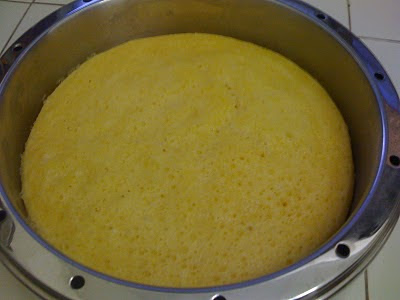When I spoke to a good friend of mine recently who had just purchased a DSLR, I found out that lot of people have a wrong perception towards DSLR. Most of the people will think that with DSLR, they are able to capture better and sharper photos compare to compact camera.
Well, that can be a right or wrong kind of thing. Of course with better quality optical lens and larger image sensor, DSLR is able to produce good quality & sharper photos but is not always true. We must first understand the basic of photography before we can actually produce better and sharper photos. So what is the basic?
Photography is all about light; if there is no light, there will be no photography and here, we are talking about exposure. Just remember the Exposure Triangle and I call it the Golden Triangle of Photography, which consists of three elements ie. ISO, Shutter Speed and Aperture.

By bringing all these three elements together, we will have an exposure combination. Changing in any one of these elements in the combination will result in either increase or decrease the remaining two. Sounds confusing or rather complicated right? Try to understand the following definition and it will help you to understand what I’ve just said.
ISO
ISO, pronouced as “I-S-O” not “I-So” is the sensitivity of your DSLR image sensor to light. ISO is measured in numbers that is 100, 200, 400… 1600, etc. It simply means that ISO 200 is twice as sensitive as compare to ISO 100 and so on and so forth. Lower ISO will produce finer or smoother grain in photograph and higher ISO will increase noise in your photo. Just remember to always keep to the lowest number as possible in your photo shooting so that you can produce a finer and noise free photo.
Shutter Speed
Shutter Speed which measures in second (s), for example 30s, 15s, 10s, 5s, 1s, 1/10s, 1/60s… 1/4000s, is the amount of time your camera shutter is open and determine the length of time your DSLR image sensor exposed to light. Remember in most cases, use shutter speed faster than 1/60s to avoid camera shake that produce blur photo. It is very difficult for a beginner to handheld and shoot below 1/60s without tripod. I personally can only handle up to 1/30s (moreover with the aid of VR, the vibration reduction from NIKON) so prepare to use tripod if you want to use shutter speed lower than that. Yes, I know it is troublesome but isn’t taking sharp photo is what you want?
Aperture
Aperture is the size of opening in the lens and it is measured in ‘f-stop’, for example f/1.8, f/2, f/2.8, f/4, f/5.6, f/8… f/22, etc. Beginner always confused this f number and the tricky part is they are opposite; the smaller the f number, the bigger the size of opening in the lens and vice versa. Why it is so? Just because f number is a fraction, let’s refresh back to some basic mathematic formula and calculation:
The f number, N and is given by

where f is the focal length and D is the diameter of the lens opening.
Get it? Yes? No? Who cares? Me ain’t no mathematician and since we are talking about photography here, let’s just forget the formula. Instead, memorize this… the smaller the f number, the bigger the lens opening and it allows more light enter through the lens; the bigger the f number, the smaller the lens opening and it allows less light enter through the lens. Wonderfully simple right?
Having written this much, I came to a realization that there are plenty of basic DSLR photography I wanna talk about. Hence, I think I’ll break it into few parts. Hope you all enjoy my post and till then!
 I came across this steamed sweet creamy corn recipe by chance. Previously I've tried my hands on steaming recipe before but it turned out rock hard. This time however, I have my i-chef steamer pot with me which somehow makes me even more eager to get it done. Did this cake in a jiffy on a late Sunday evening and I was relieved it turned out soft, moist and not too dense. The preparation method was easier than the usual recipes as I do not need to beat the butter. Anyway , I wouldn't have second thoughts to steam this cake again. Hubby as usual didn't eat much as he doesn't have a sweet tooth.
I came across this steamed sweet creamy corn recipe by chance. Previously I've tried my hands on steaming recipe before but it turned out rock hard. This time however, I have my i-chef steamer pot with me which somehow makes me even more eager to get it done. Did this cake in a jiffy on a late Sunday evening and I was relieved it turned out soft, moist and not too dense. The preparation method was easier than the usual recipes as I do not need to beat the butter. Anyway , I wouldn't have second thoughts to steam this cake again. Hubby as usual didn't eat much as he doesn't have a sweet tooth.  I poured some batter into mini cups just for fun. Oh yea...the picture's quality is out, I know coz I was the photograher :D
I poured some batter into mini cups just for fun. Oh yea...the picture's quality is out, I know coz I was the photograher :D 






 where f is the focal length and D is the diameter of the lens opening.
where f is the focal length and D is the diameter of the lens opening. 


